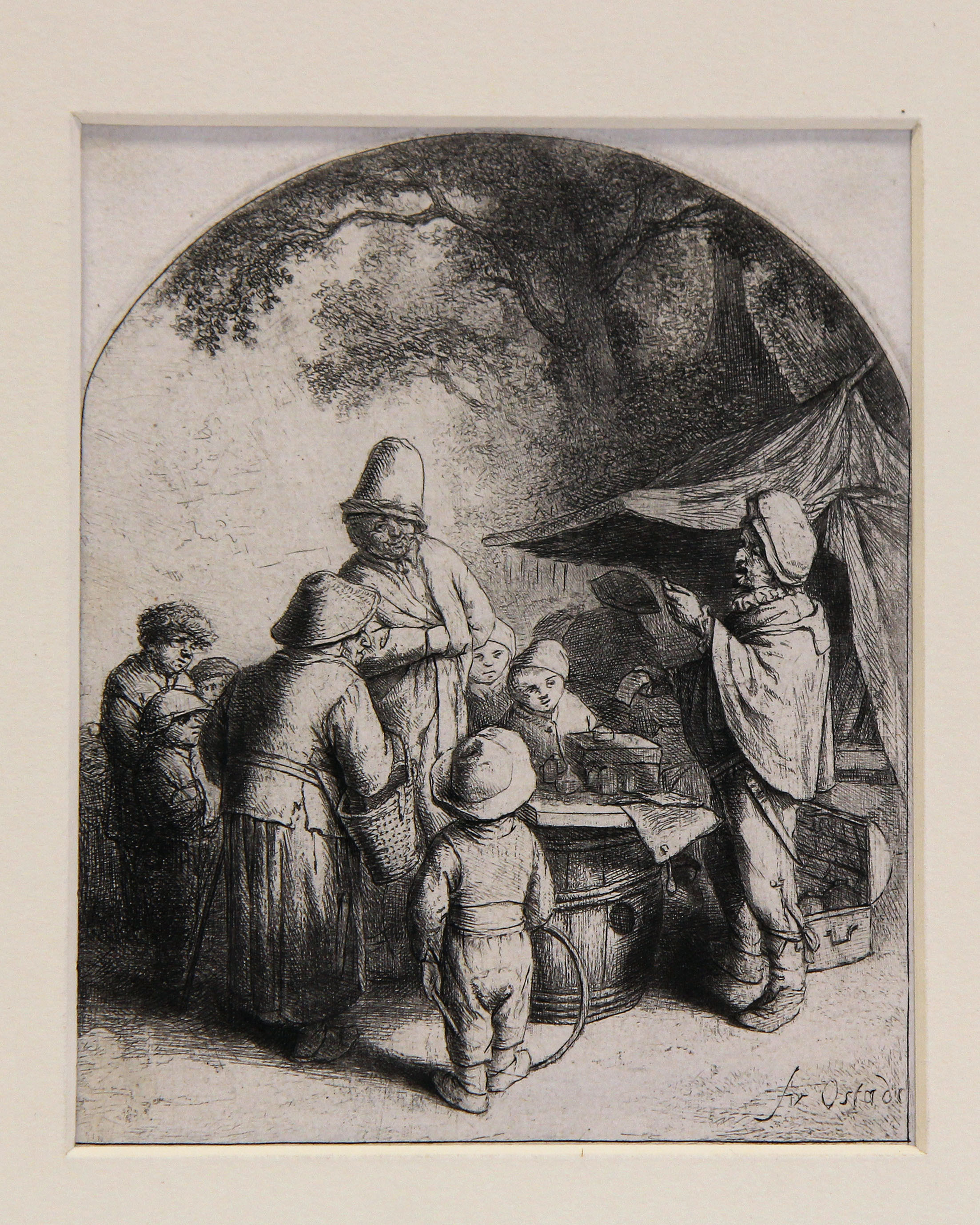Social World of the Artist : The Quacksalver
Adriaen Van Ostade, a prominent member of The Haarlem Guild of St. Luke, was critical of what he perceived to be a form of quacksalvery within the artistic community of the seventeenth-century Netherlands.
Changes within the political, religious, and economic spheres, during seventeenth-century Netherlands, shaped the both the contemporary art and economic markets. With the emergence of general economic prosperity, quacksalvers gained a pulpit in which they could hawk subpar remedies and medicinal cures to inexperienced buyers. To the guilds who were accustomed to control over both the production and sale aspects of the art world, this shift away from the ingrained traditions produced an influx of amateur and foreign artists working outside the formal guilds, who these men saw as swindlers comparable to the everyday quacksalver. These amateur artists arguably produced pieces solely for monetary gains and oftentimes sacrificed the quality of their work by using shoddy materials, a monochromatic palette, and time-saving techniques.
Another development within the art world which preoccupied the guilds was the surge of amateur dealers and their manipulative practices. The dealers, within their own unregulated market, opened up a broader range of works to an expanded clientele. Like the victims of the quacksalver, these unsuspecting buyers paid higher sums for subpar goods.
While the guilds imposed new laws and regulations in order to stem the flow of change, these were relatively unenforceable and the changes became commonplace. Adriaen Van Ostade was forced to resort to his own artwork as an expression of frustration at developments that overturned his traditions.

